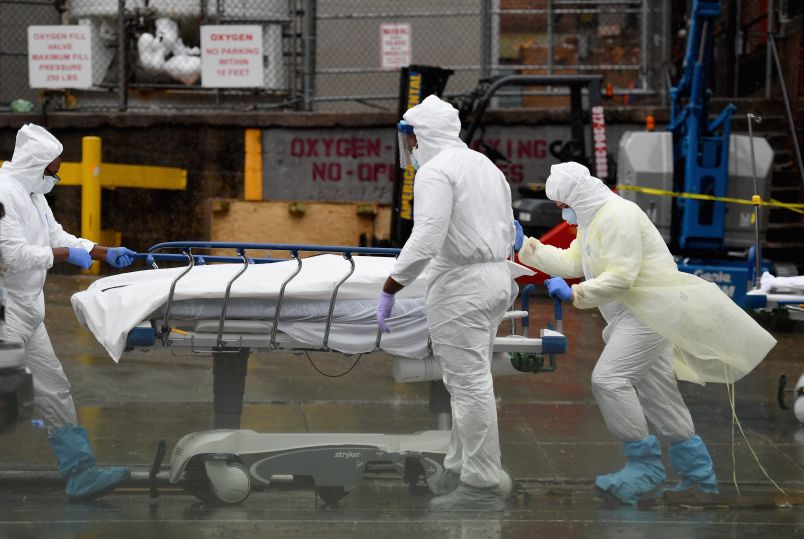Tens of thousands of additional deaths occurred in the United States between March and July of 2020 on top of the COVID-19 death toll, according to a paper released this week.
The Virginia Commonwealth University study, published on Monday, found that COVID was listed as the cause for only 67 percent of excess deaths from March through Aug. 1 of this year.
The study also found that there were a total of 225,530 deaths by Aug. 1 beyond what would have been forecasted for 2020 based on mortality rates from previous years and population trends. That leaves around 75,000 deaths up to that point unaccounted for.
The U.S. official COVID-19 death toll passed 200,000 on Sept 22.
Dr. Steven Woolf, the study’s lead author and a professor at Virginia Commonwealth University, told TPM that all of the excess deaths identified in the study were due either to the virus itself or those who “died because of disruption caused by the pandemic.”
Though the study found that COVID-19 accounted for two-thirds of national excess deaths during the first five months of the pandemic, the discrepancy at state level is far starker.
In Arizona, for example, which by Aug. 1 had seen an estimate of 7,471 more deaths than in a non-pandemic year, only 53 percent of those deaths had been attributed to COVID-19. Similarly, only 56 percent of Texas’s 17,772 excess deaths were attributed to COVID-19, the study found.
Woolf said that the gap could be due to a wide range of reasons, and noted that for a period of time following the deadliest weeks in New York City’s spring outbreak “there was a process of backfill where there’s what appears to be a big gap between COVID deaths and excess deaths.”
He added that looking back at the same time period in New York City, local authorities had updated the tallies so that 80 to 90 percent of excess deaths in the five boroughs are now attributable to COVID-19.
Woolf added that the discrepancy raises other issues, including limited public health resources and deaths due to disruption caused by the pandemic. The Houston Chronicle reported in August that the pandemic’s true toll was higher than the state had reported on its deaths certificates; Woolf did not discount that possibility as well.
The research also reflects differing approaches to managing the virus.
New York City, which faced a severe outbreak in late March but then enacted longer-term suppression policies, “returned to baseline in May” for excess deaths.
But states that reopened earlier “experienced more protracted increases in excess deaths that extended into the summer,” the study found.
Woolf added that the study also identified national increases in deaths due to heart disease as well as Alzheimer’s and dementia; it remains unclear whether those are due to the virus or some other cause related to the disruption of the pandemic.



